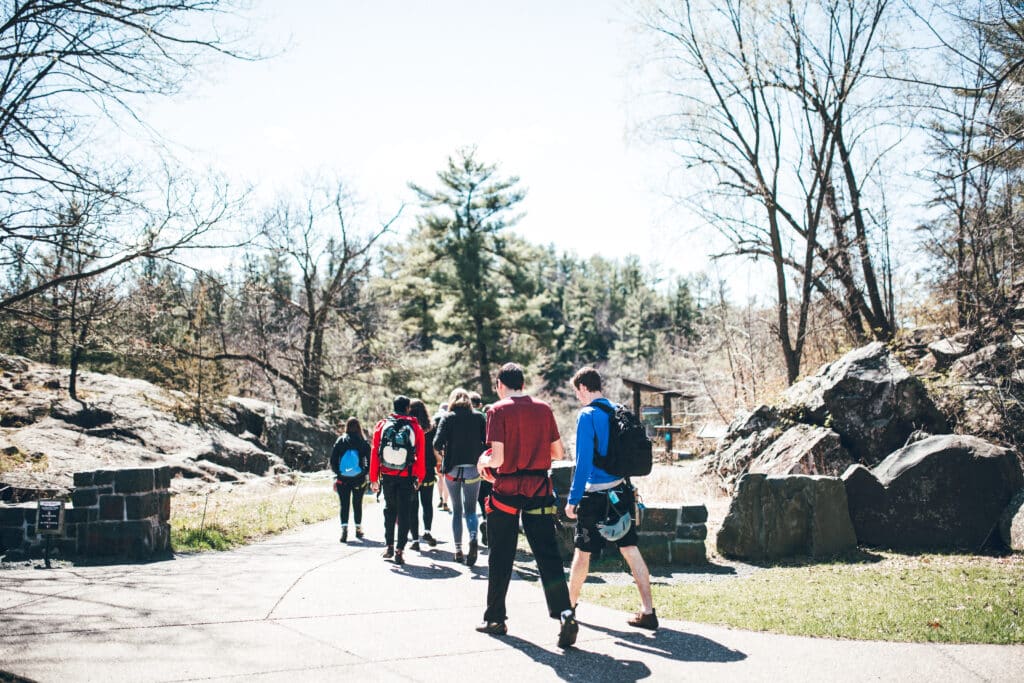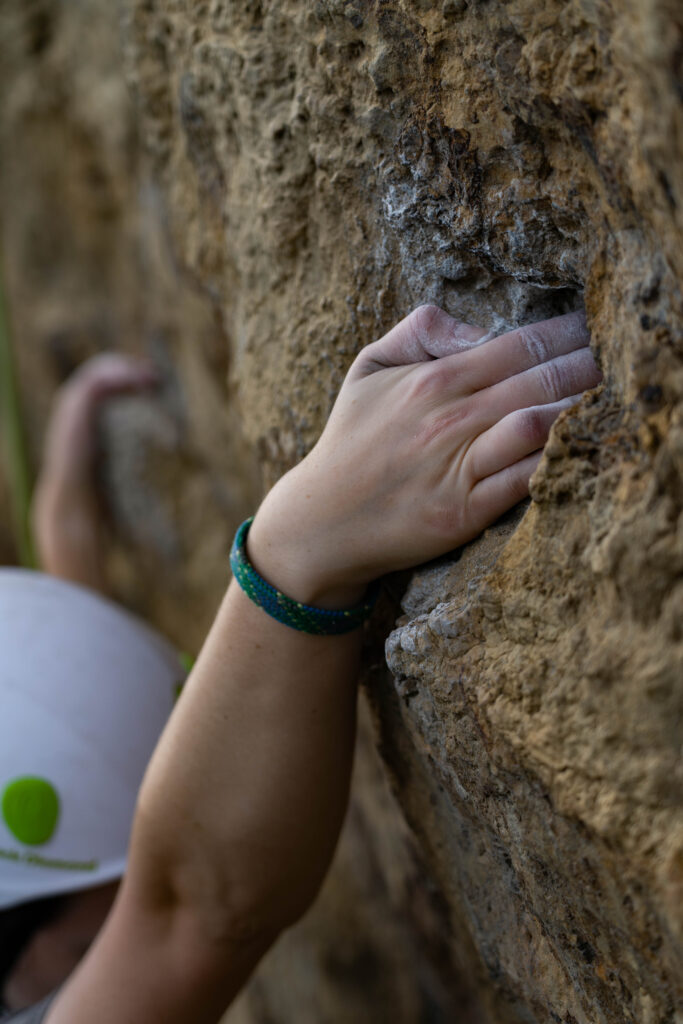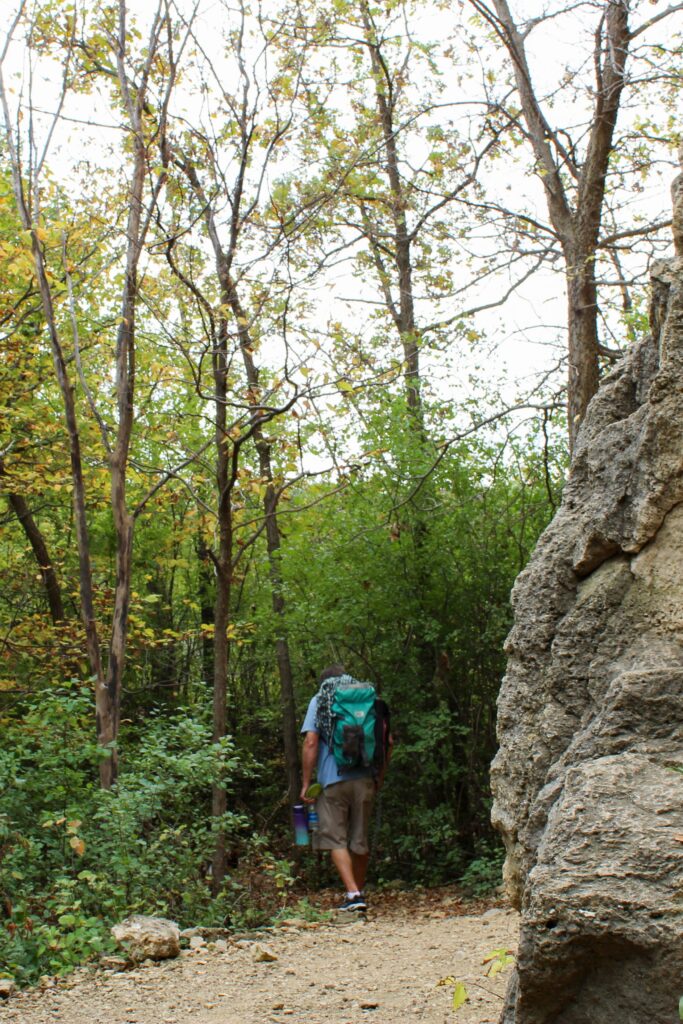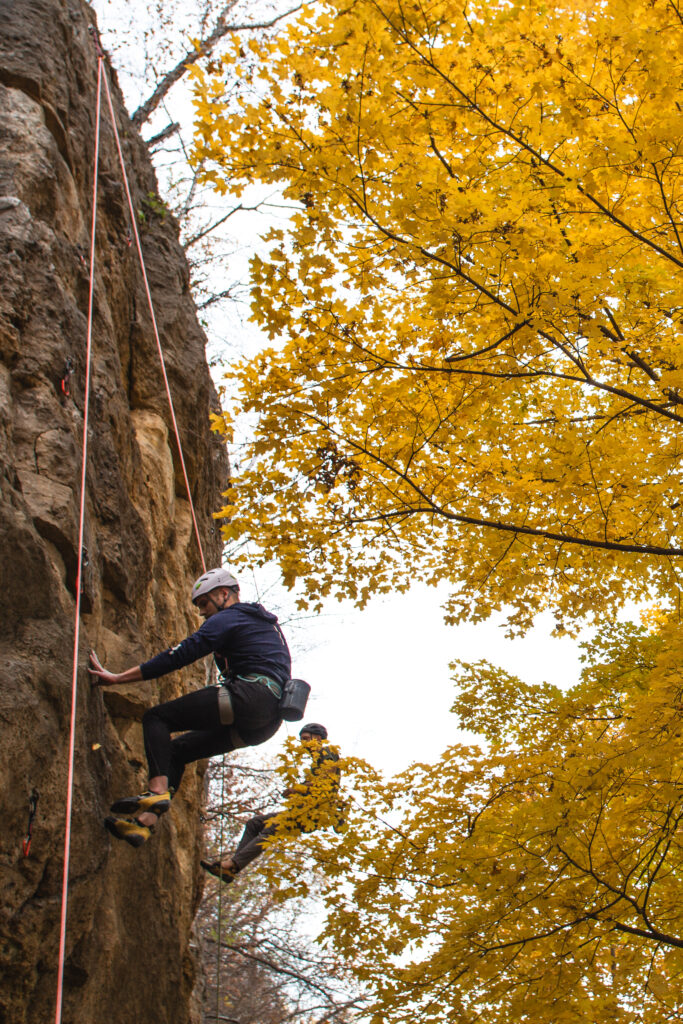Navigating Outdoor Climbing Ethics
Outdoor climbing is a thrilling pursuit that allows individuals to connect with nature while pushing their physical and mental limits. However, as the popularity of climbing grows, so does its impact on the environment. Climbers must be stewards of the outdoors, practicing responsible ethics to minimize their footprint and ensure that climbing areas remain pristine for generations to come. In this blog, we’ll delve into outdoor climbing ethics, focusing on the use of chalk, biodegradable products, and general rules that promote sustainable climbing practices.

Chalk and Climbing Ethics
As we all know, chalk is an essential tool for climbers. It enhances grip by absorbing moisture from your hands and keeping them dry, which is crucial for maintaining control and safety on the rock. However, chalk is not without controversy when it comes to outdoor climbing ethics. Excessive chalk usage can lead to unsightly white streaks on rocks, negatively affecting the natural aesthetics of climbing areas. To mitigate this issue, climbers should follow these guidelines when climbing outdoors:
Use chalk sparingly
Apply chalk only when necessary, and be mindful of the amount you use. A little chalk goes a long way, so there’s no need to create a cloud of it on your hands and climbing holds.
Brush the rock
Bring a soft brush with you to clean off excess chalk and chalk residue after your climb. This small effort can make a significant difference in preserving the rock’s appearance. This includes removing tick marks you may have created to help during your projecting.
Choose chalk balls
Chalk balls are a more eco-friendly alternative to loose chalk. They release less chalk into the environment, making them a responsible choice for outdoor climbers.
Biodegradable chalk
If you want the best of both worlds, check out Metolius Super Chalk Eco Ball. The highly absorbent chalk material wicks sweat off the skin while leaving no trace on the rock.

Stay Informed About Local Regulations
Some climbing areas may have specific rules regarding chalk usage. Check with local climbing organizations or guides to understand any restrictions or recommendations for chalk use at your chosen climbing destination. Following these rules is essential for maintaining access to climbing areas.
In addition to regulations around the use of chalk, many popular areas will close due to various bird protections. These regulations are predominant around nesting or mating season when birds such as falcons are more sensitive to movement and sound. Other popular climbing areas, such as Devil’s Tower, close each year in June out of respect for cultural activities. National Parks are diligent about communicating climbing area closures, so be sure to check online before you plan your next big climbing trip!
The Environmental Impact of Climbing Gear
Climbing gear, including ropes, harnesses, carabiners, and protection devices, is typically made from materials like nylon and aluminum. The production and disposal of these materials can have a significant ecological footprint. Climbers can reduce this impact by considering biodegradable and eco-friendly alternatives.
Climbing ropes are often made from nylon, which is not biodegradable. However, some manufacturers offer ropes made from sustainable materials like hemp or a blend of natural fibers. While these ropes may be pricier, they are a worthwhile investment for environmentally-conscious climbers.
When it comes to choosing a harness and climbing clothing, opt for products made from sustainable materials. Look for clothing brands that prioritize eco-friendly fabrics and manufacturing processes. Additionally, consider longevity when making purchases. High-quality, durable gear lasts longer and reduces the need for frequent replacements. Luckily, most of the biggest names in climbing clothing are making the switch to eco-friendly materials.
General Outdoor Climbing Ethics & ‘Leave No Trace’ Principles
Outdoor climbers should adhere to Leave No Trace principles, which provide a framework for minimizing human impact on natural areas. These principles apply to all outdoor activities, including climbing, camping, hiking, and more.

Plan ahead and prepare
Do your research before heading out to climbing areas. Understand the local regulations, weather conditions, and potential environmental concerns. Ensure you have the necessary equipment and knowledge to minimize your impact.
Travel and camp on durable surfaces
Stick to established trails and camping areas to avoid damaging fragile ecosystems. Avoid trampling on vegetation, disturbing wildlife, or creating new paths.
Dispose of waste properly
Pack out all trash, including chalk bags, tape, and food wrappers. Use designated waste disposal facilities when available, and carry a small trash bag for items like chalk and tape.
Leave what you find
Preserve the natural beauty of climbing areas by not disturbing plants, animals, or geological features. Avoid chipping or modifying holds on rock faces, as this can irreparably damage the climbing environment.
Minimize campfire impact
If allowed, use a camp stove for cooking instead of making a fire. Fires can scar the landscape and consume limited resources.
Respect wildlife
Observe animals from a distance and avoid feeding them. Keep your food securely stored to prevent wildlife from becoming habituated to human food.
Be considerate of other visitors
Keep noise levels down, yield the trail to hikers when necessary, and maintain a friendly and respectful attitude toward fellow climbers and outdoor enthusiasts.
Stick to established climbing trails and routes
To minimize environmental impact, climbers should stick to established trails when approaching climbing areas. Avoid creating new trails or shortcuts, as this can lead to erosion and damage fragile ecosystems. Similarly, use established climbing routes and avoid trampling on vegetation or disturbing wildlife while moving between climbs.
Share climbing areas responsibly
Climbing areas can become crowded, especially in popular locations. To ensure that everyone can enjoy these areas responsibly, it is important to respect those around you. Seems easy, right? While this should be a no-brainer, for some, reminders are needed.
Wait your turn if a route is occupied, and be patient with beginners or slower climbers. Offer assistance or advice if requested, but avoid unsolicited guidance. To help reduce wait times, keep your group small. Large climbing groups can have a more significant impact on the environment and other climbers. This will help reduce congestion and minimize environmental disturbance.
Climbing is a social activity, excessive noise can disturb other climbers and the natural surroundings. Maintain a considerate noise level, especially during times when birds and other animals are beginning to nest.

Becoming Responsible Outdoor Climbers
Outdoor climbing ethics encompass a range of considerations, from chalk usage to gear choices and general behavior in climbing areas. As climbers, it’s our responsibility to protect the environment and the access to these beautiful outdoor spaces. By following ethical guidelines and advocating for sustainable practices within the climbing community, we can ensure that climbing areas remain pristine for current and future generations.
Remember, outdoor climbing is not just about reaching the summit; it’s also about preserving the natural beauty of the landscapes that provide us with such incredible opportunities. As the climbing community continues to grow, let’s make a collective commitment to leave no trace, choose eco-friendly gear, and be ambassadors for responsible outdoor climbing ethics.
Climbing is dangerous, it involves inherent and other risks and cannot be eliminated. The information presented here does not describe all of the risks associated with climbing and is not intended to replace or supersede expert instruction and training.
© 2023 Vertical Endeavors, Inc. All rights reserved. The contents of this article, photographs, and graphical representations are protected by U.S. and International copyright laws. Reproduction and distribution, in part or whole, without written permission from Vertical Endeavors are prohibited. The opinions and information contained in this article are for entertainment and informative purposes. They are those of the author and may not represent those of Vertical Endeavors, and do not necessarily reflect the ideas, ideologies, opinions, or points of view of the organization, affiliates, owners, stockholders, partners, suppliers, licensors, or staff. Under no circumstances shall Vertical Endeavors or any entity that is, has been, or will be affiliated be liable for any indirect, incidental, consequential, special, or exemplary damages arising out of or in connection with the information contained in this article.

